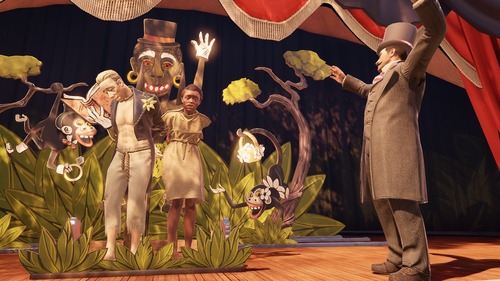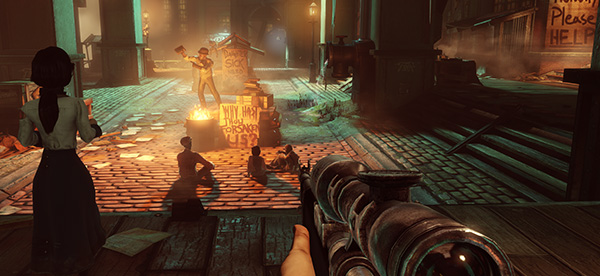This post has not been edited by the GamesBeat staff. Opinions by GamesBeat community writers do not necessarily reflect those of the staff.

Spoiler warning: Even though the main plot of BioShock Infinite is not the central focus of this article, minor spoilers are to be expected.
Storytelling in video games has come a long way since the simple “save the princess” days of the 1980s. While the medium began without much emphasis on story, that’s slowly become a key aspect. Within the past few generations, video games have proven capable of evoking emotions in players and provoking thought through their innovative and sometimes revolutionary storylines, many of which have received considerable praise from critics and fans alike. I’d personally like to credit games like Silent Hill 2 and the Mass Effect trilogy for showcasing some of the most well-written stories — because of their depth of emotion and how they handle subjects that had been untouched at the time.
Consider the recently released and critically acclaimed BioShock Infinite. What makes its story so revolutionary is the way it touches on various forms of social commentary — primarily racism and the struggle between social classes. Now, I realize that it’s entirely possible that a game or two may have dealt with these subjects before, but never have they been so prominent and central to the plot.
When the player character and hero of BioShock Infinite, Booker DeWitt, arrives on the floating utopia of Columbia, the city is alive and vibrant with joyful festivities, and its inhabitants greet him with friendly hospitality. The people of Columbia are portrayed as generally average folk living average lives, such as those who would in the early 1900s. It isn’t until about a quarter of the way through that Columbia’s skeletons begin to emerge from their closets.
There is a key point in the story (which I will have to spoil) that undoubtedly did its job to shock players and abruptly pull them out of their state of relaxation. Booker attends a carnival, where a raffle is taking place. After dabbling in some fun and games, he makes his way down to a stage surrounded by an enthusiastic crowd, where he participates in the raffle. He wins, and his prize is what sets the tone for the remainder of the story. The curtains rise and reveal a couple: a young Irish man and his partner, a young African-American woman (pictured above). The townspeople are prepared to humiliate them by throwing baseballs at them, and Booker has just won the first throw.
From this point on, the level of racism among the inhabitants of Columbia becomes more prominent and upfront, and the game eventually delves further into class issues when the player witnesses the harsh manual labor of the “lesser races” and ventures into “Shantytown,” the slum area of the floating city. Players come across instances of segregation as well as audio logs that record the reasoning of those in charge. While the story evolves from here and other aspects eventually overshadow these, this subject still serves as a key element.
That the writers of BioShock Infinite were willing to explore such issues to such a great degree — something that has never been done so significantly before — serves as a prime example as to how storytelling in video games continues to reach new heights with every new generation. Subjects that were once considered unfit or were simply viewed as taboo are gradually finding a place in the medium, proving that video games inspire reactions from players just as successfully as books or movies can.
The writers deserve every bit of praise given to them for being brave enough to take a risk such as this, which very well could have backfired if not done in such an expertly executed fashion. Occasions such as these show the growing maturity of video games and foreshadow the progress that has yet to come.


